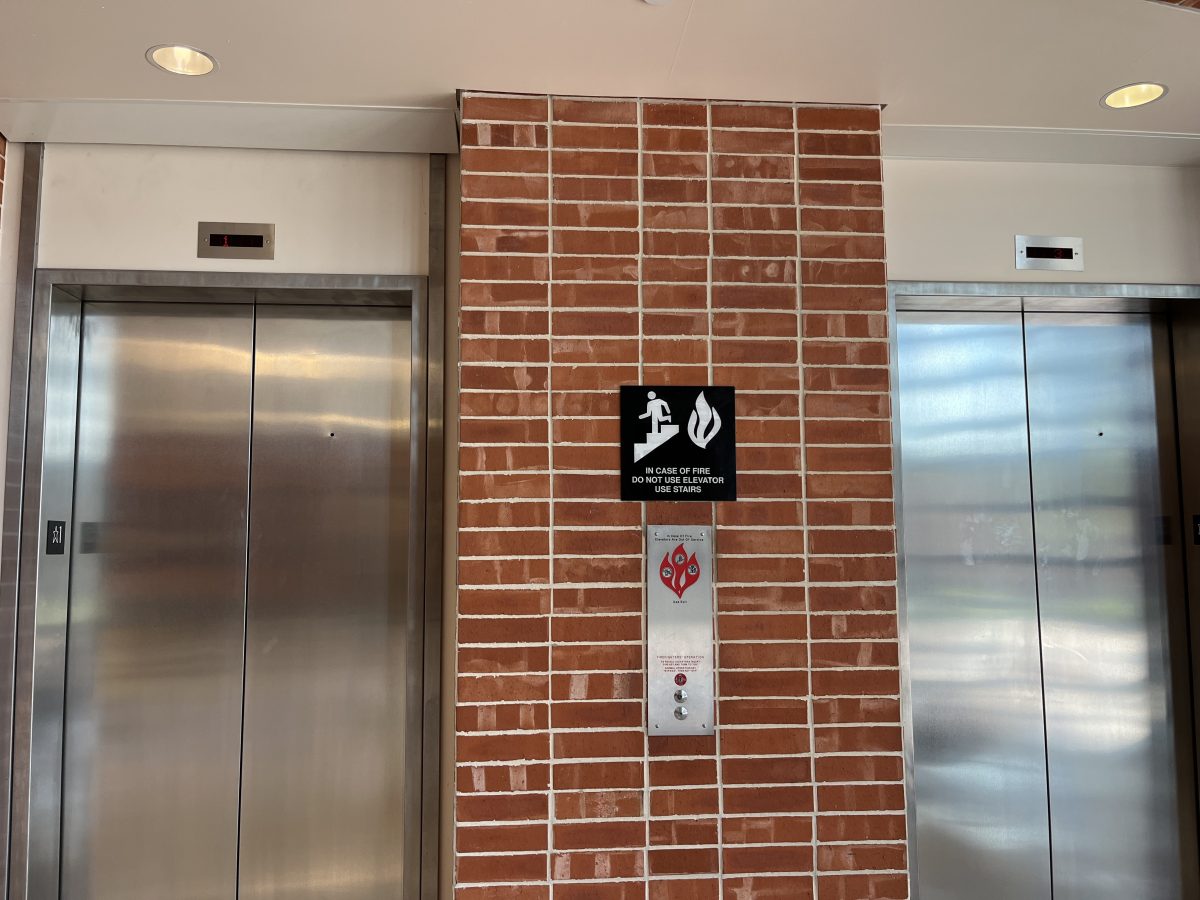From Oct. 17 to 18, I attempted to locate every elevator on Trinity University’s campus. I took note of which buildings did not have elevators and tried to gauge the accessibility of each elevator. I found that upper campus was fairly accessible overall, but residence halls had few elevators, rendering them inaccessible for students and visitors with mobility issues.
As of Oct. 18, two elevators on campus were broken: one on upper campus and one on lower campus. Elevator No. 1 in Elizabeth Huth Coates Library was out of service, having never opened when paged. The William H. Bell Athletic Center elevator at the main entrance to the gym could be paged from any floor, but the interior buttons do not work. There was no signage to indicate these issues. Despite these elevators being broken, Coates Library has a second elevator and the Bell Center has accessible entrances to all levels.
While I only found two broken elevators, I also found that many dorm buildings had no elevators. Out of 14 dorms, only seven have elevators. In addition, many dorm elevators are small and difficult to use for people using mobility aids.
Mylo Mittman, junior communication major, uses a mobility scooter and elevators to get around campus. They noted the issues presented by the size of many elevators.
“I’m lucky enough that the scooter that I use to get around, I don’t necessarily need that … If worse comes to worst I can get out of it and just go up the elevator without it,” Mittman said. “But those elevators are just small and I pray that the day someone with a wheelchair who can’t leave it comes along, that the elevators are a bit wider.”
Elevator access affects not only students with mobility issues but also family members visiting students. Alyssa Lagrone, junior psychology major, noted that a family member could not visit her dorm during Fall Family Weekend due to South Hall lacking any elevators.
“I have a family member who can’t really walk that well, and so I wanted to show her my room but I literally could not ‘cause she couldn’t get up the three flights of stairs to come see my room …That was kinda sucky,” Lagrone said.
Taylor Hervey, sophomore psychology major, recounted a similar experience when moving into Albert Herff-Beze Hall during her first year, as her father was unable to get to her dorm.
“There were no ways to get to the third floor besides stairs. And my dad who had just had double surgery on his legs, he couldn’t come up and see or say bye,” Hervey said. “It was really upsetting for both of us.”
Hervey, who now lives in Bruce Thomas Hall, noted that the elevators in the building were unreliable and poorly maintained. She also mentioned that she had witnessed others get stuck in the Thomas No. 1 elevator.
“The floors are always pretty gross … but for the last two weeks they’ve been rattling and shaking and, I mean, it’s kind of suspicious,” Hervey said. “Like one time, I was about to get on the elevator and this group of girls came out and they were like ‘Don’t go on the elevator, it just got stuck. We were just stuck.’”
The lack of elevators in residence halls and the unreliability of some elevators create roadblocks for students and visitors with mobility issues. However, Mittman mentioned that Student Accessibility Services and other departments are making efforts to accommodate students.
“SAS [Student Accessibility Services] and anyone dealing with accessibility on campus is genuinely there to help and genuinely trying to help. It’s just a process to get … things where they need to be,” Mittman said.









